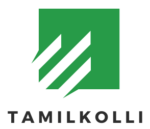Starting a new venture can be both exhilarating and daunting. When it comes to developing a Minimum Viable Product (MVP) for startups, it’s crucial to focus on the core features that will resonate with early adopters. As a seasoned blogger in the tech industry, I’ve witnessed firsthand the impact of MVP development on the success of startups. In this article, I’ll delve into the essentials of MVP development for startups, highlighting key strategies to streamline the process and maximize results.
MVP Development for Startups
What Is an MVP?

An MVP, or Minimum Viable Product, is a foundational version of a product that focuses on solving a specific problem for the target audience with essential features. It’s not about creating a complete product from the start but rather a basic version that allows for testing key hypotheses and gathering user feedback. By launching an MVP, I can validate the market demand for my product idea while minimizing time and resources spent on unnecessary features
In my experience, incorporating an MVP approach into a startup’s strategy is crucial for several reasons. Firstly, it allows me to bring my idea to the market quickly, gaining early traction and feedback. By starting with an MVP, I can iterate based on real user data, ensuring that the final product meets customer needs effectively.
Key Steps in MVP Development
Ideation and Market Research

When starting MVP development, I research the market thoroughly to understand customer pain points and needs. I analyze industry trends, competitors’ offerings, and potential gaps in the market. By identifying these key aspects, I can generate innovative ideas that address real-world problems effectively. This process ensures that the MVP I develop fulfills a genuine need in the market, increasing its chances of success among early adopters.
In MVP development, I focus on creating a minimal feature set that aligns with the core value proposition of the product. By prioritizing essential features that directly solve the target audience’s primary pain points, I can deliver a streamlined and functional product quickly. This approach allows me to launch the MVP sooner, gather valuable user feedback, and iterate on the product based on actual user interactions. Building a minimal feature set not only accelerates the development process but also helps in identifying the core features that resonate most with users.
Benefits of MVP for Startups
Cost-Effectiveness
Launching an MVP is a cost-effective approach for startups like mine. By developing a minimal version of the product with core functionalities, I can reduce initial development costs while still offering value to early adopters. It allows me to allocate resources efficiently and avoid investing heavily in features that may not resonate with the target market. As I iterate based on user feedback, I can make informed decisions on where to focus my resources for maximum impact.
Faster Market Entry
With an MVP, I can enter the market swiftly. By prioritizing essential features and getting the product to market quickly, I can start gathering valuable feedback from early users. This rapid market entry gives me a competitive advantage, allowing me to test my hypotheses, validate market demand, and adjust my product strategy efficiently.
Common Challenges and Solutions
Budget Constraints & Time Management Issues

When developing an MVP for my startup, one common challenge I face is budget constraints. As a startup founder, I understand the importance of creating a cost-effective MVP to test my product idea without exhausting my financial resources. To overcome this challenge, I prioritize essential features that align with my target audience’s needs and preferences, ensuring that I allocate funds wisely to maximize the impact of the MVP.
Time management issues can often arise during MVP development, requiring efficient planning and execution strategies. As I work on my startup’s MVP, I find it crucial to set clear timelines and milestones to track progress effectively. By breaking down the development process into manageable tasks and establishing realistic deadlines, I can optimize my time and resources to meet project goals efficiently.


